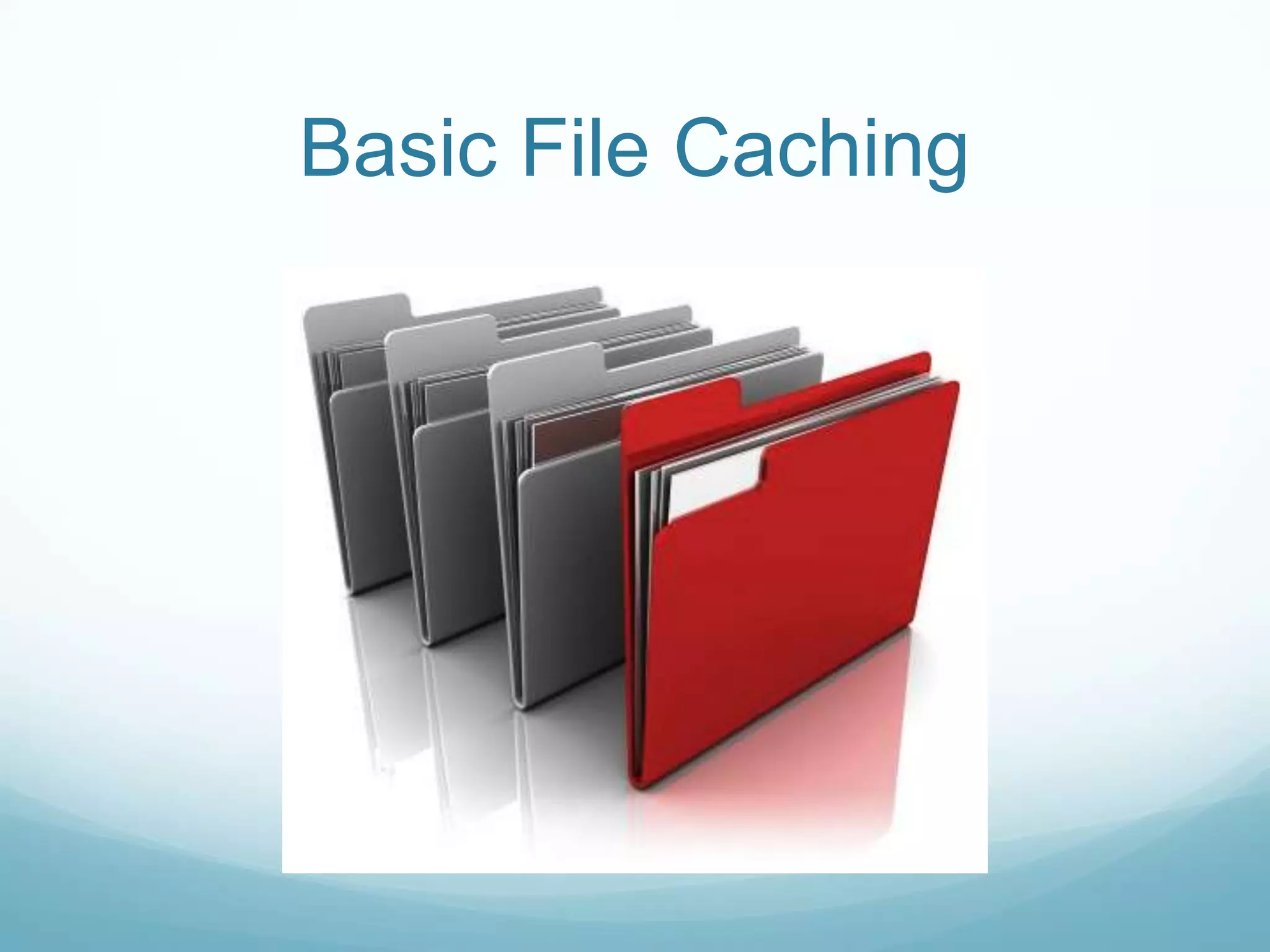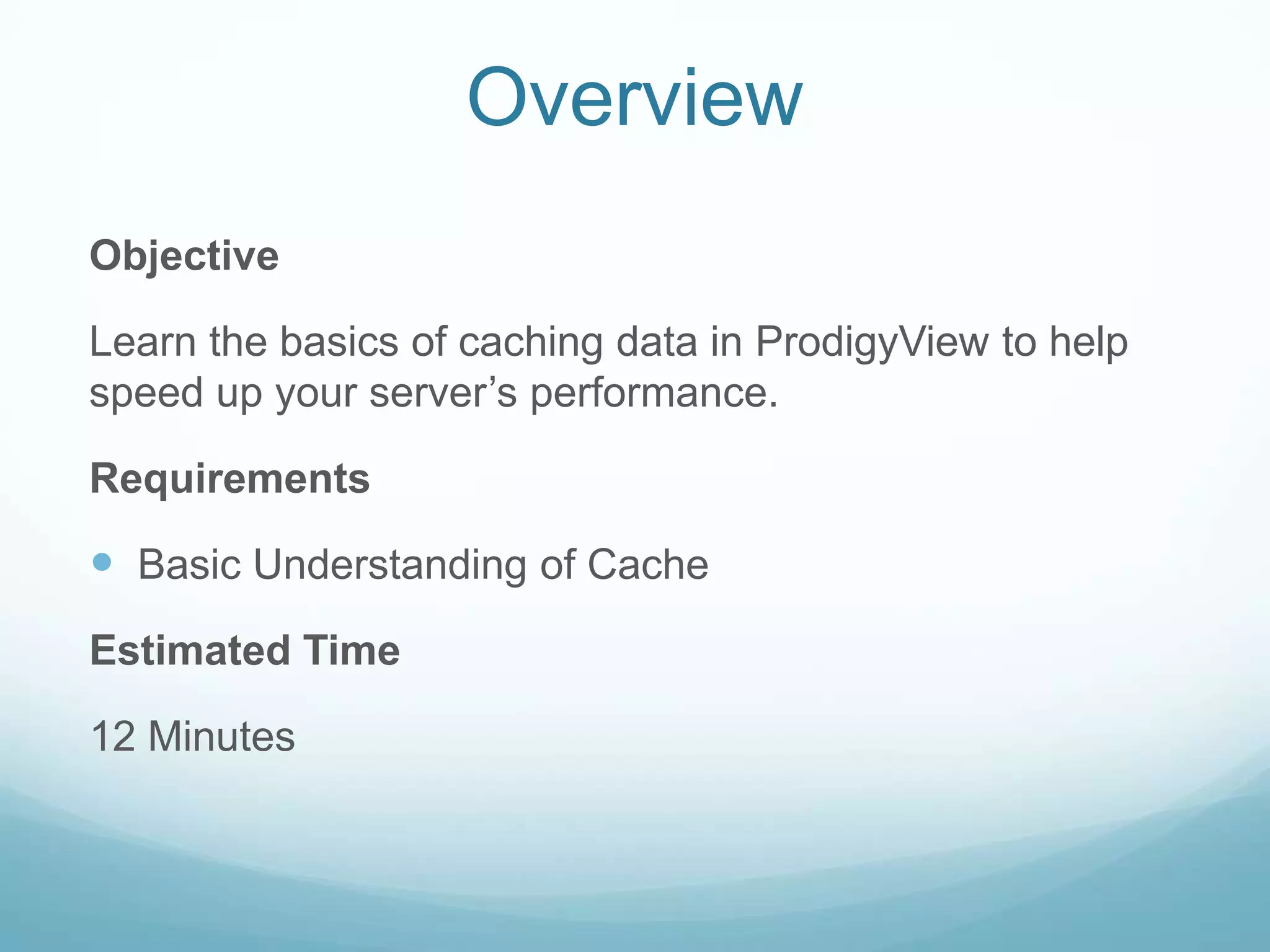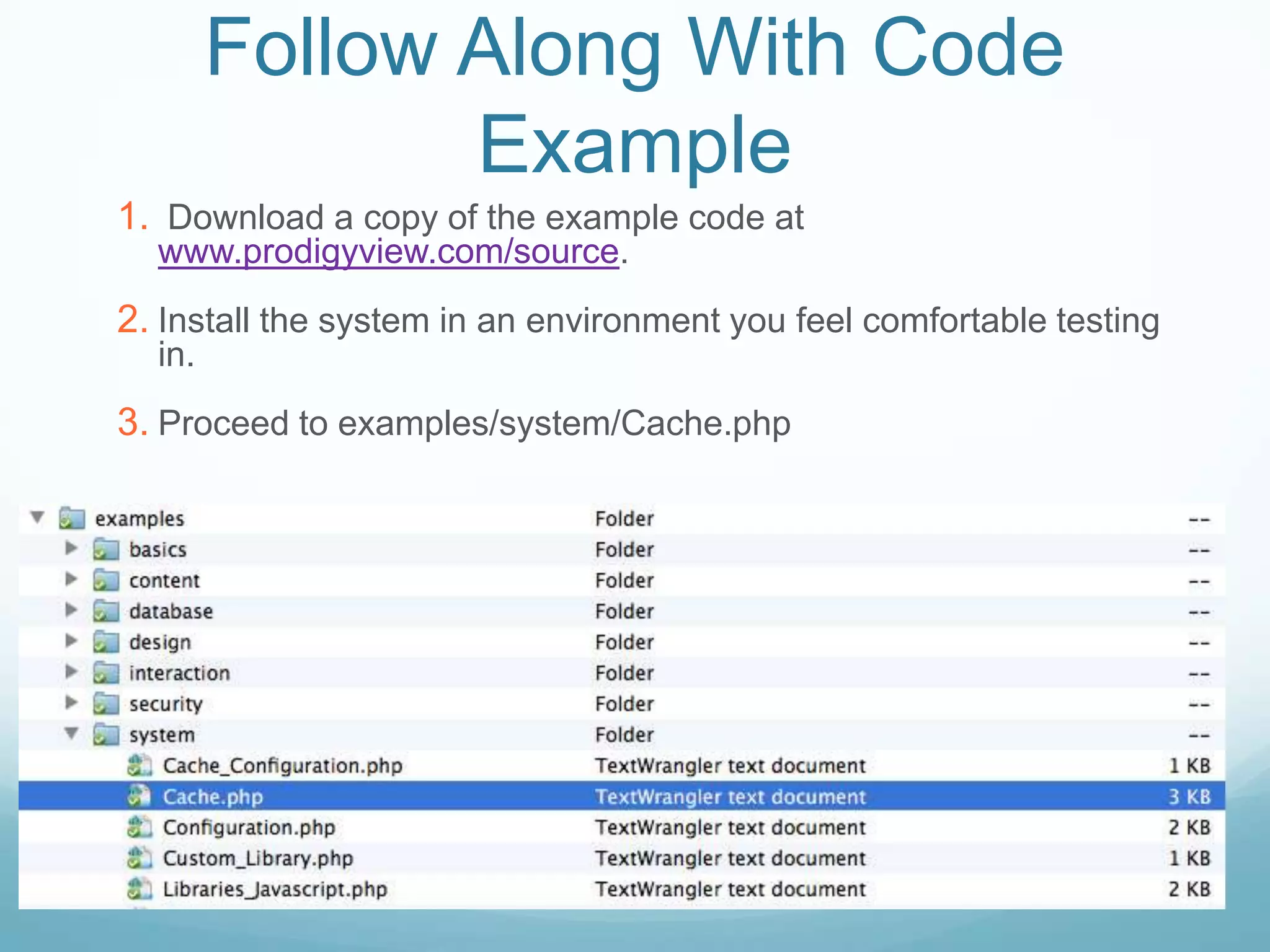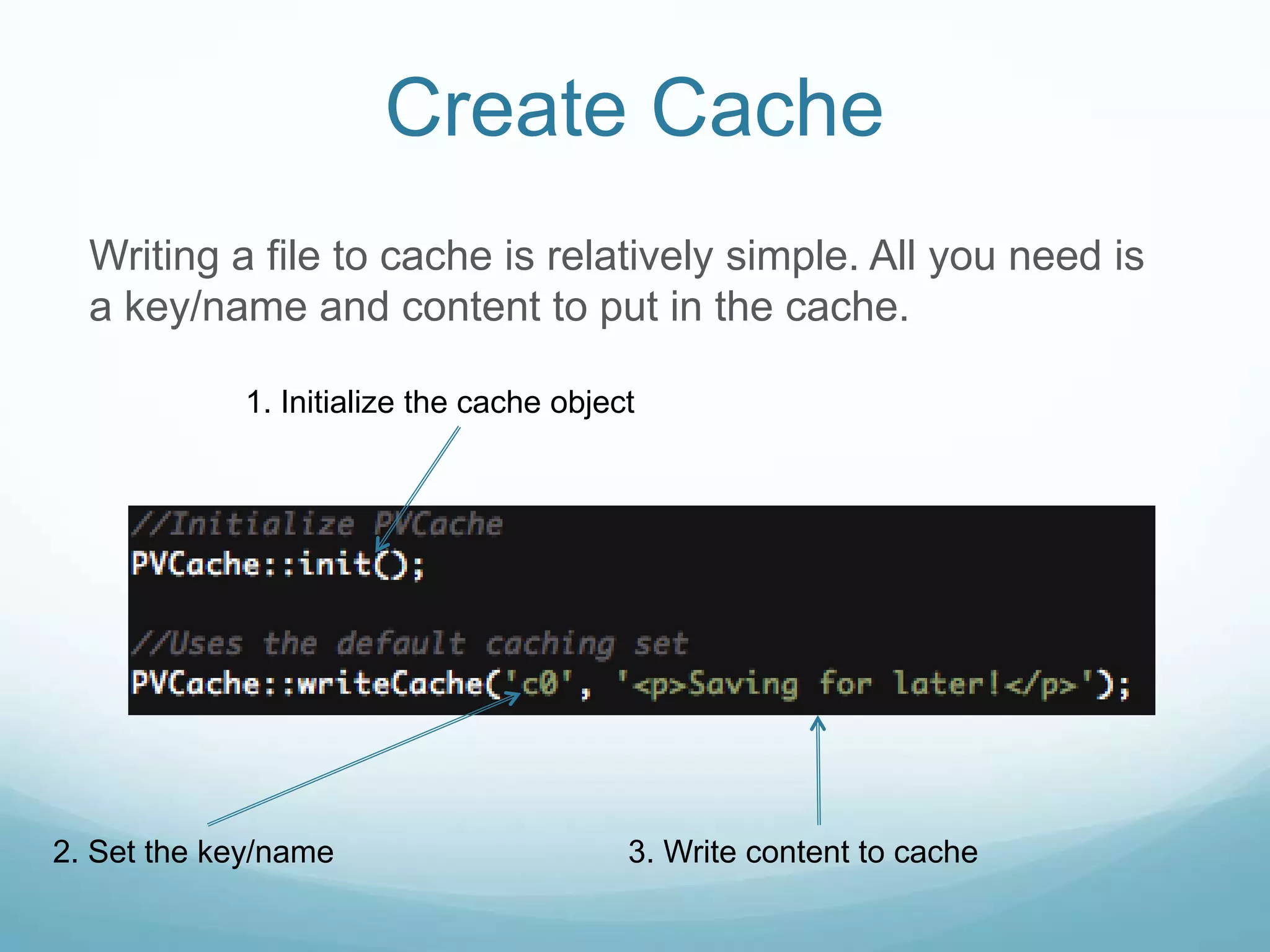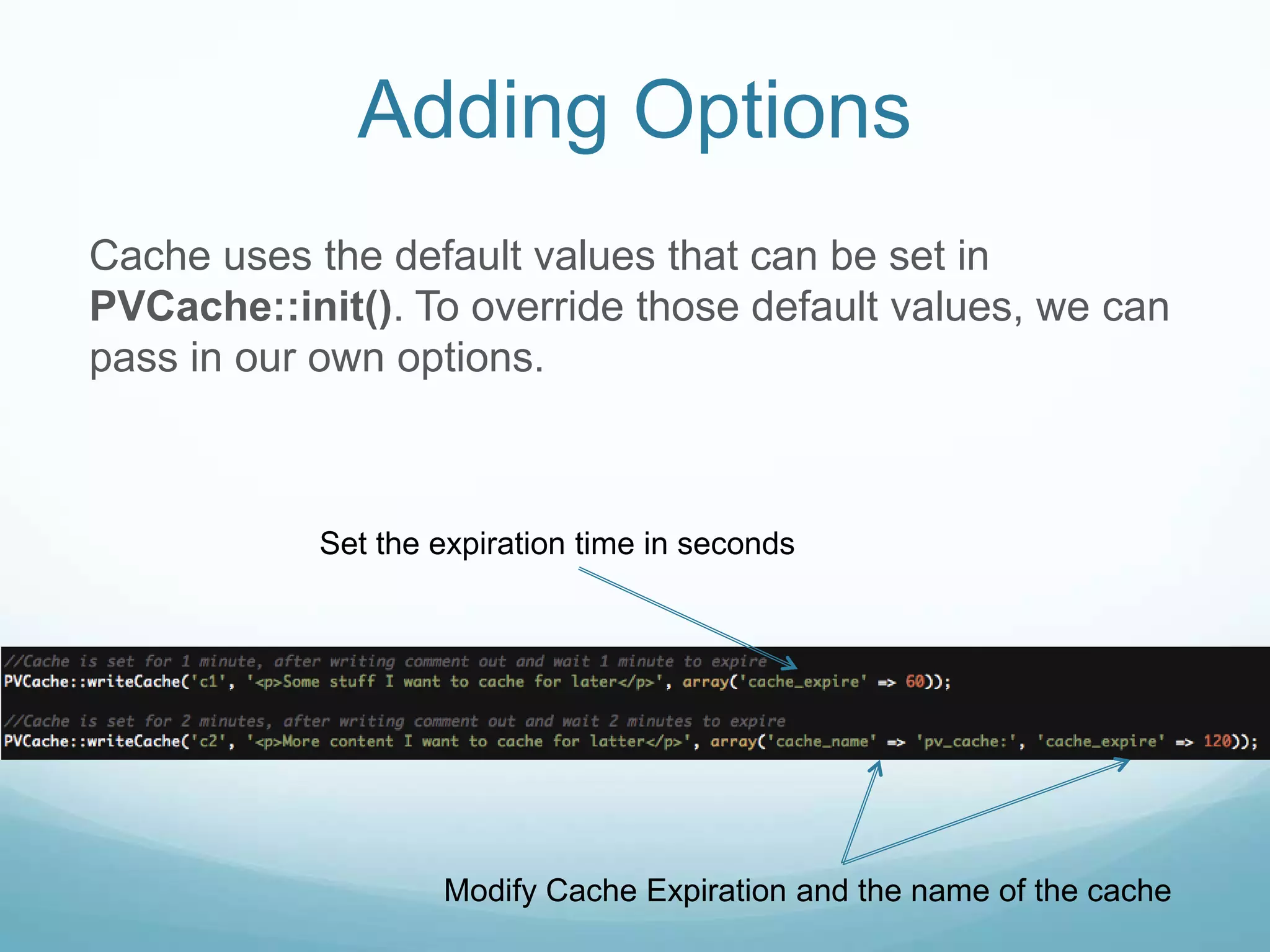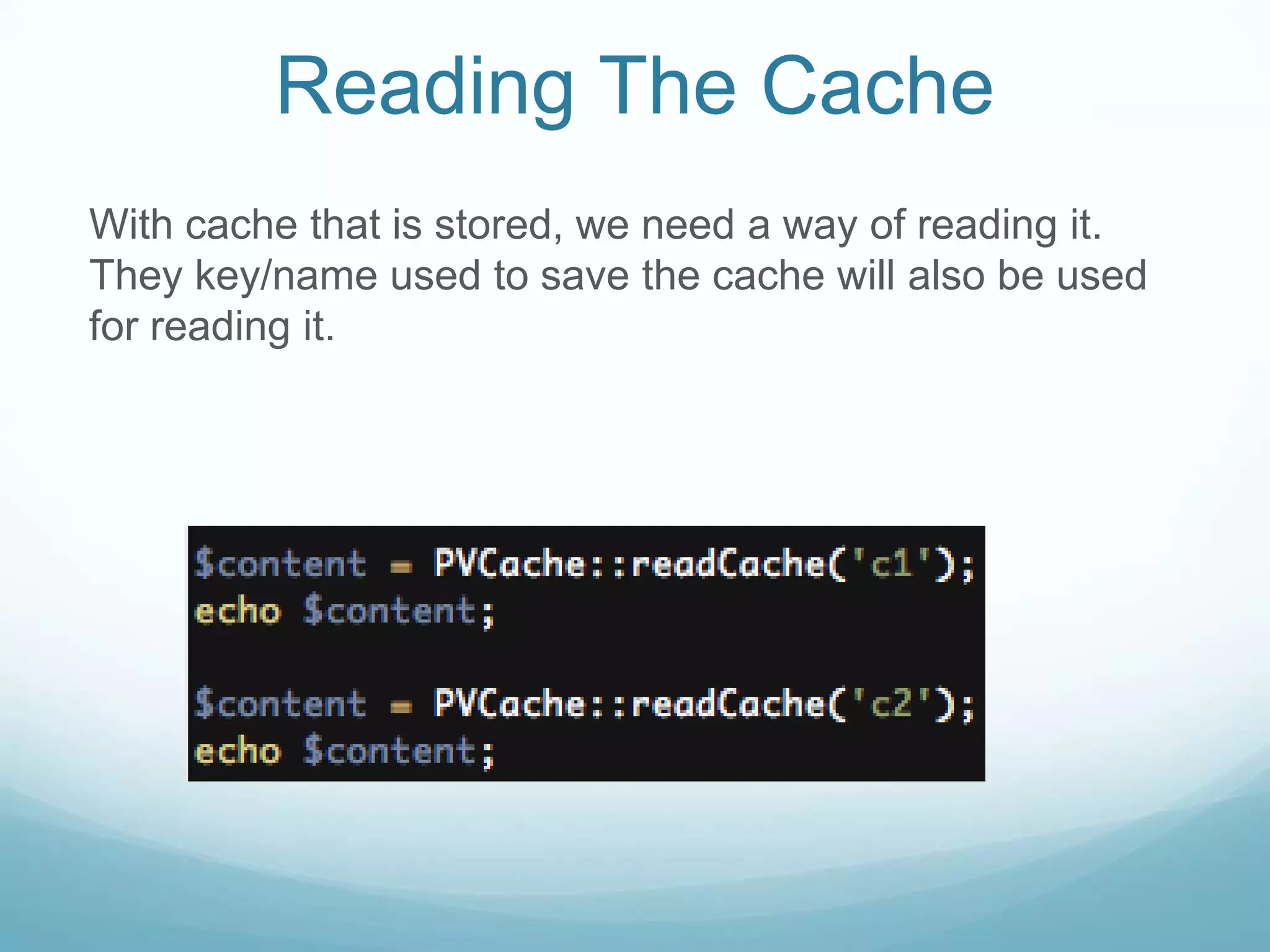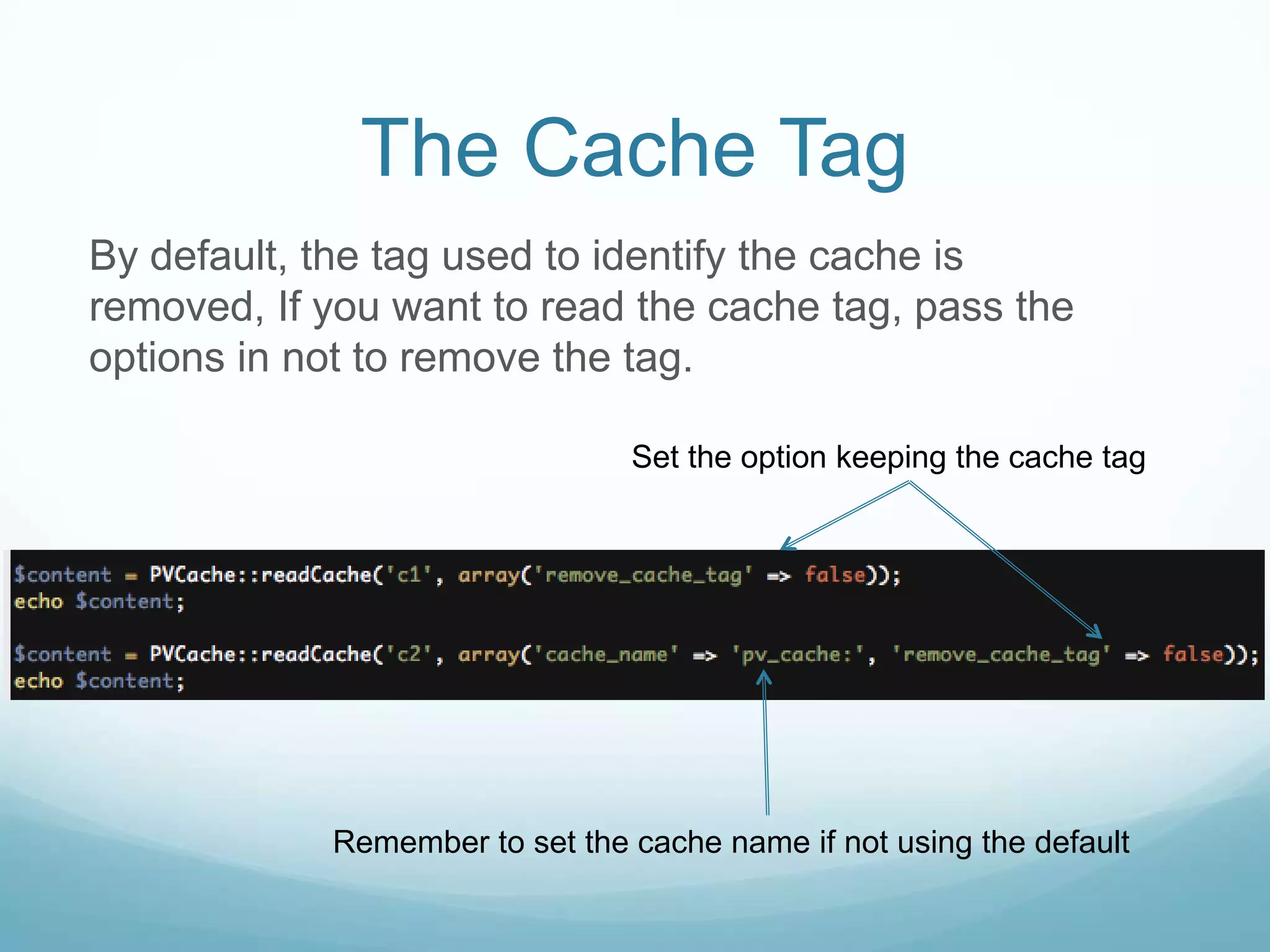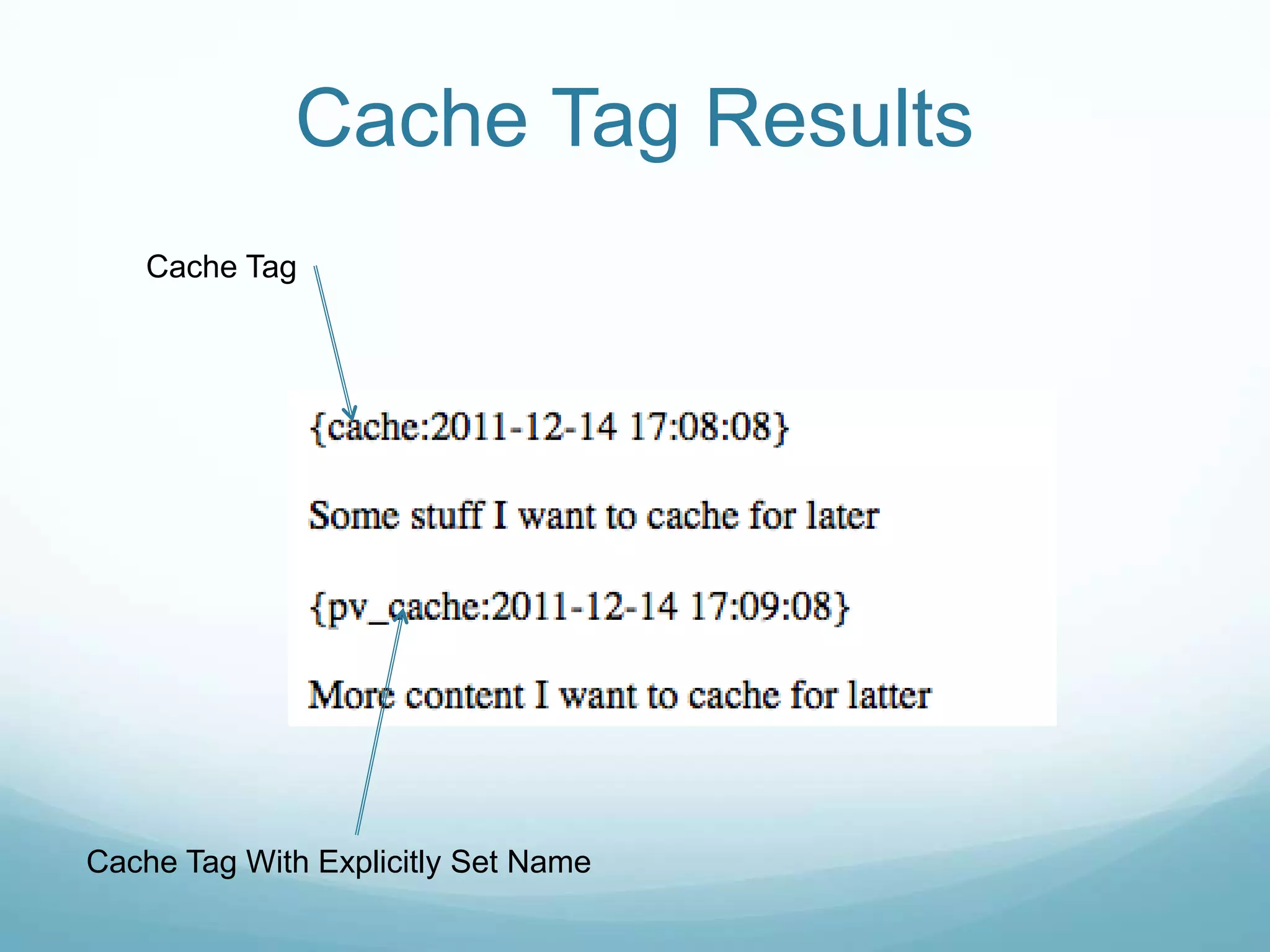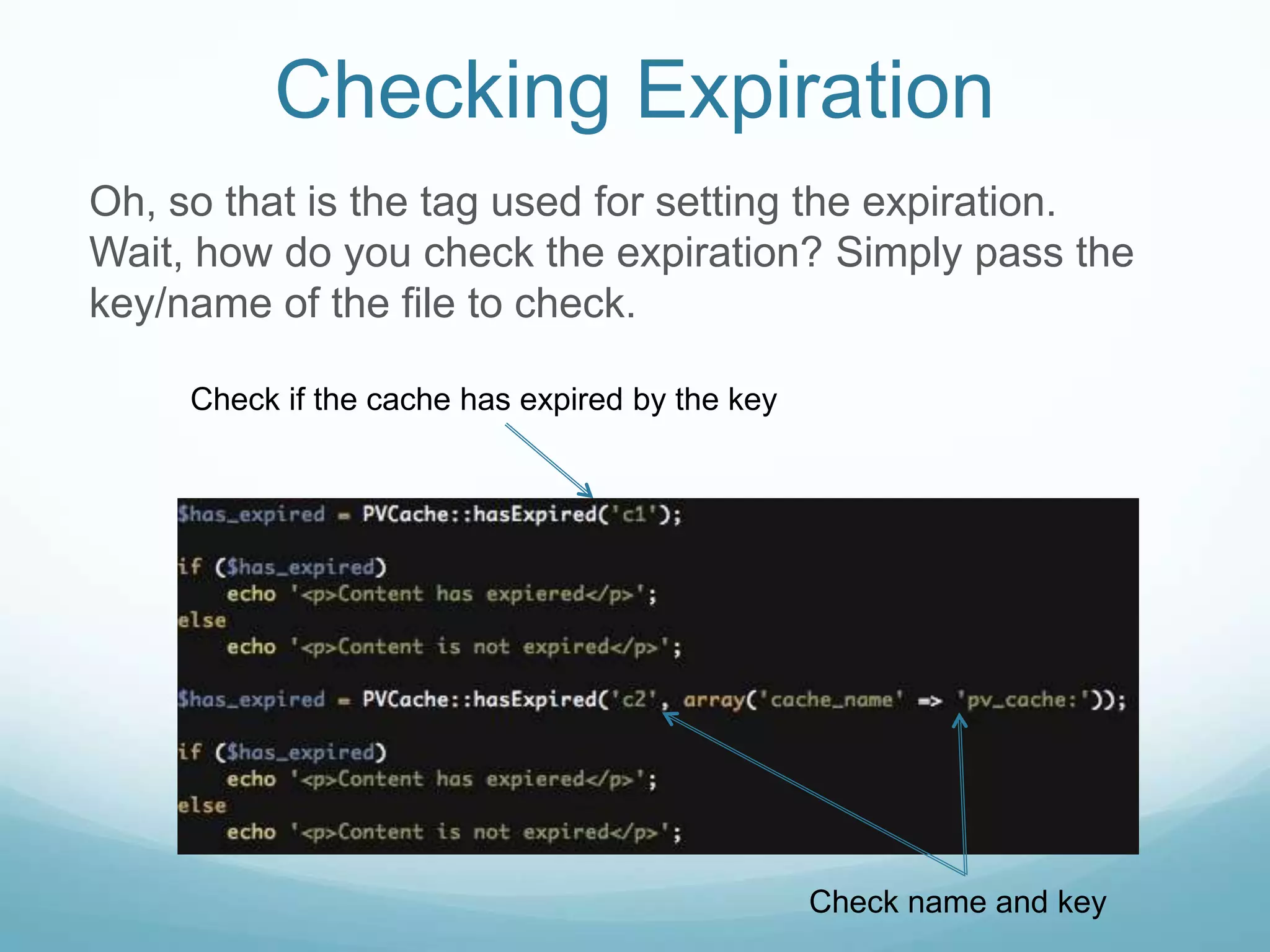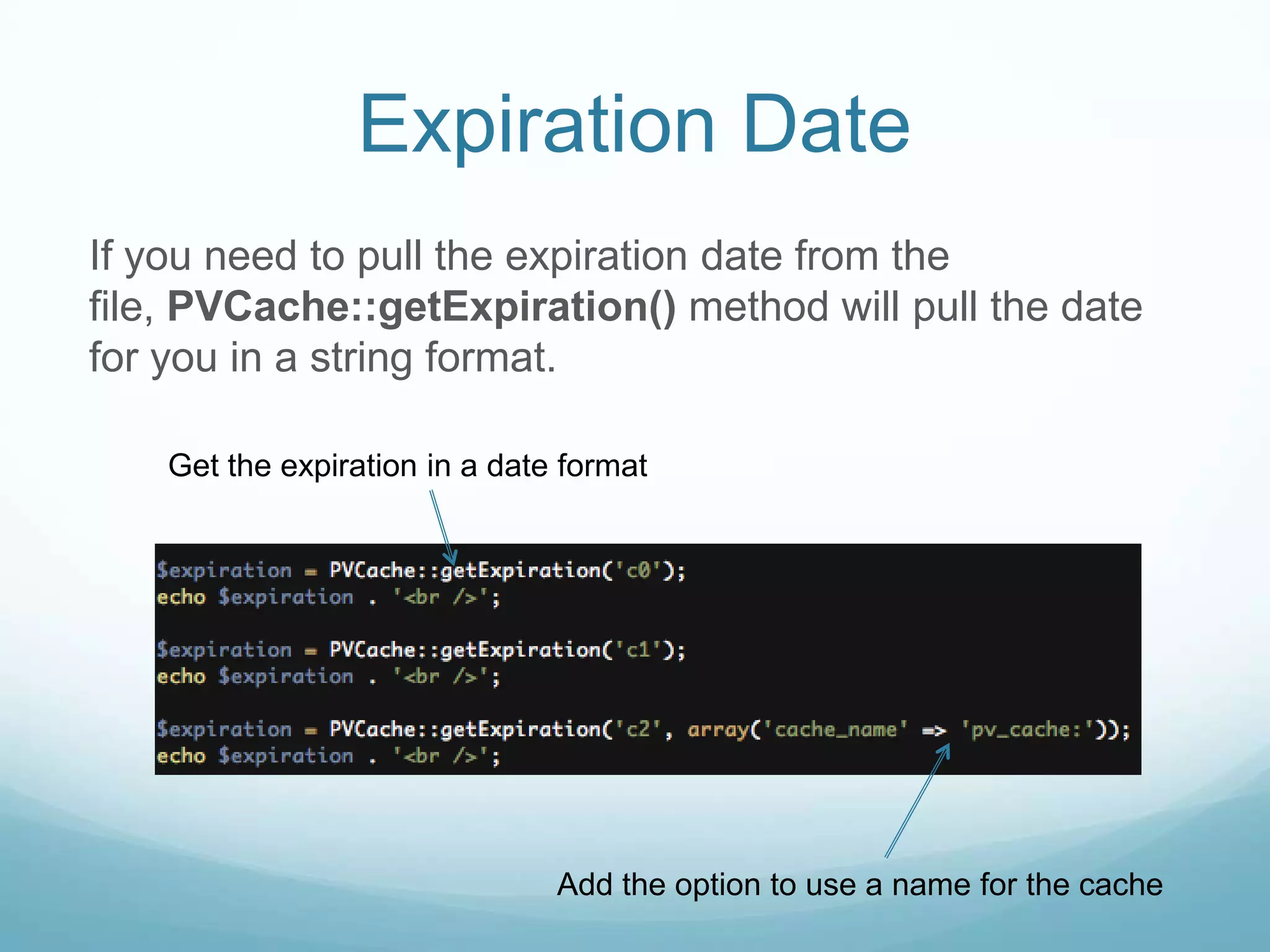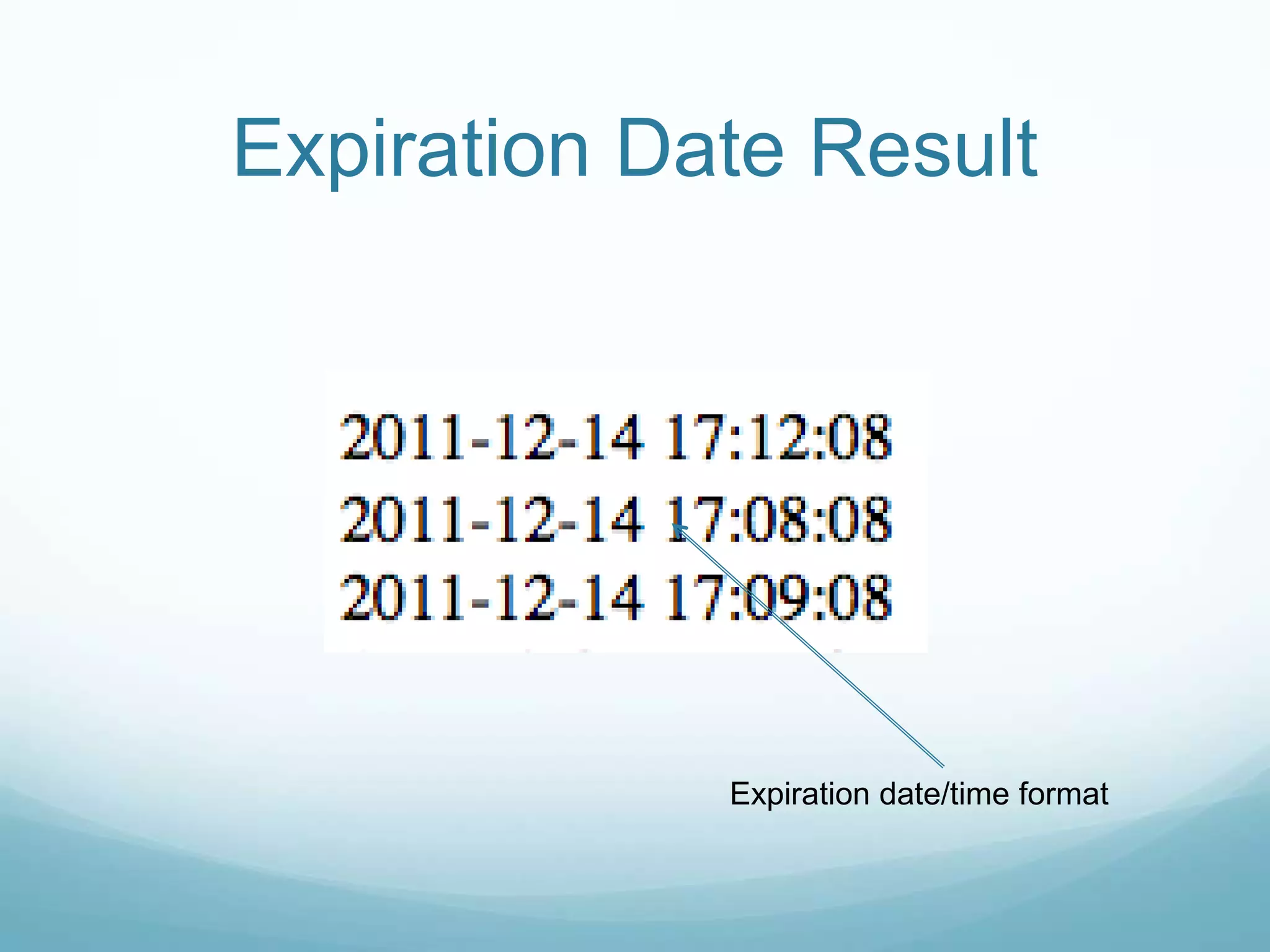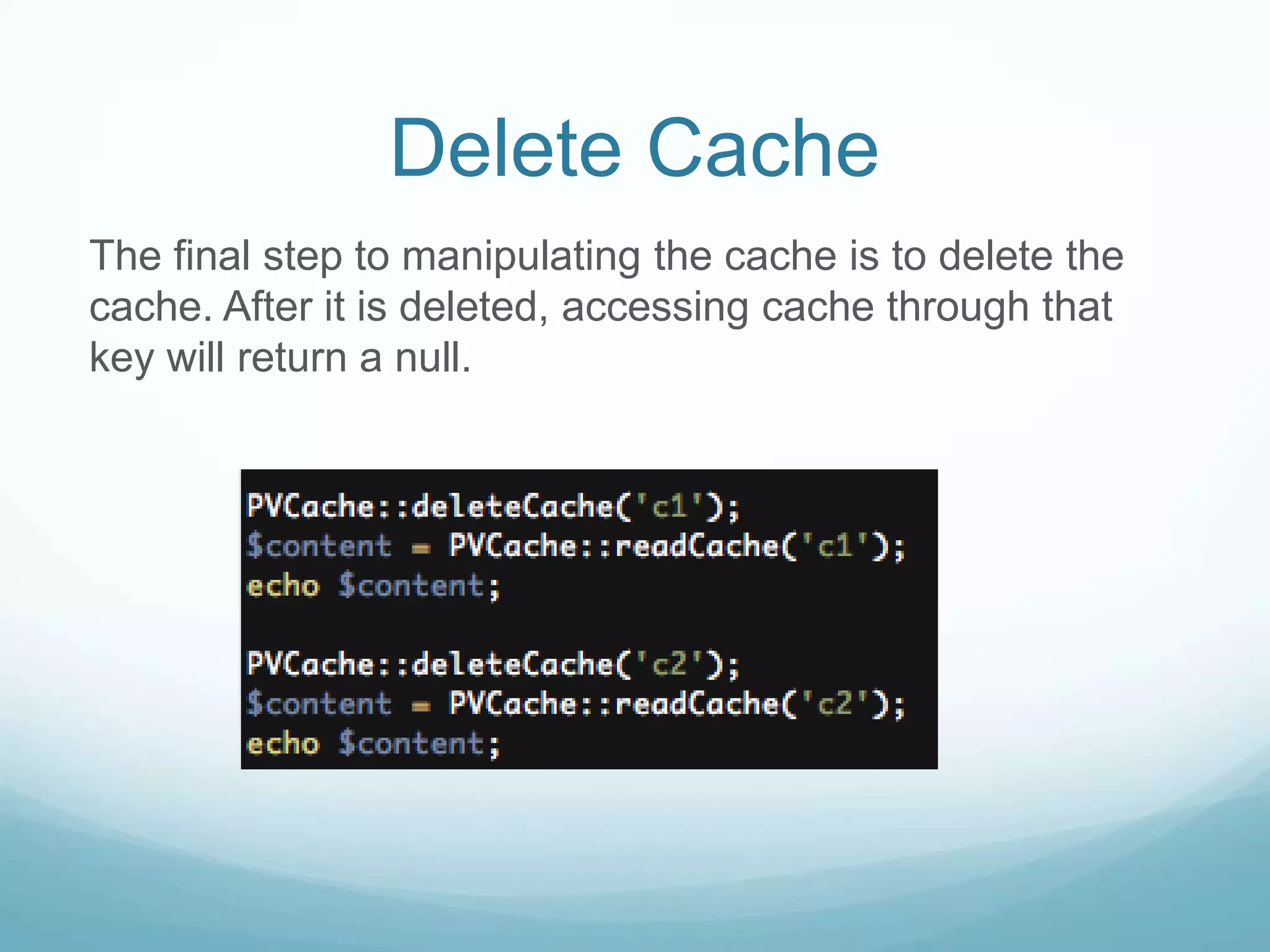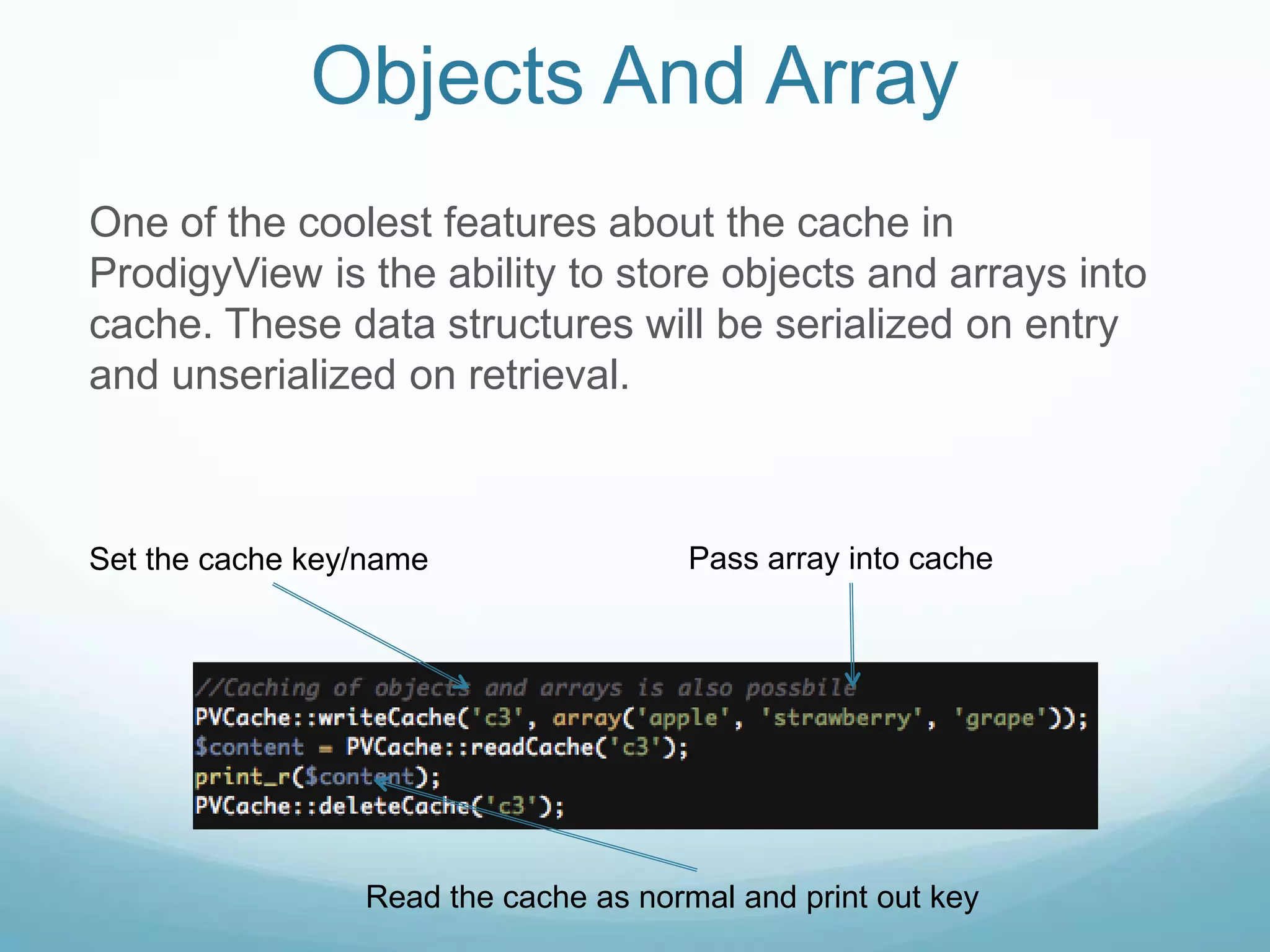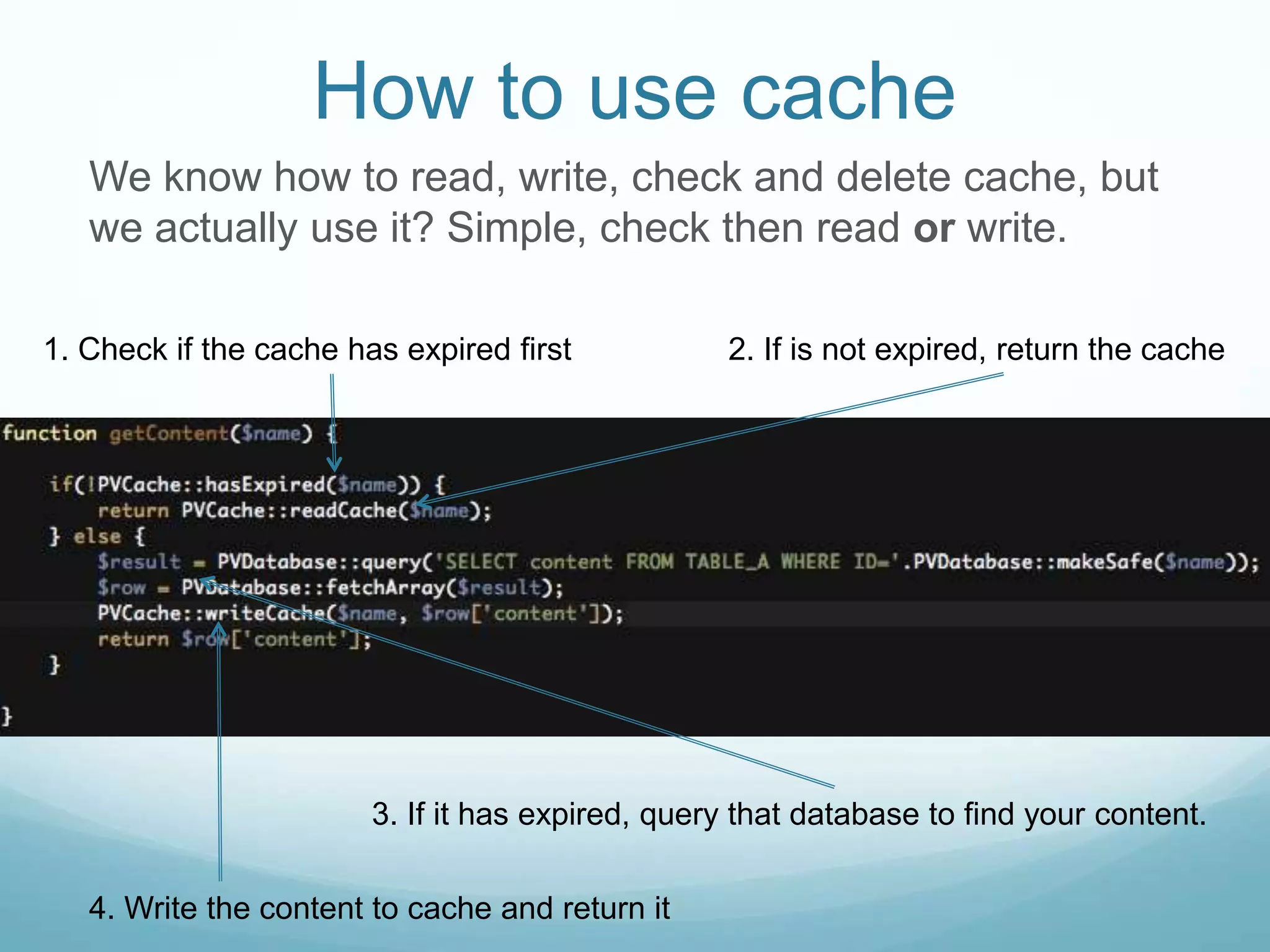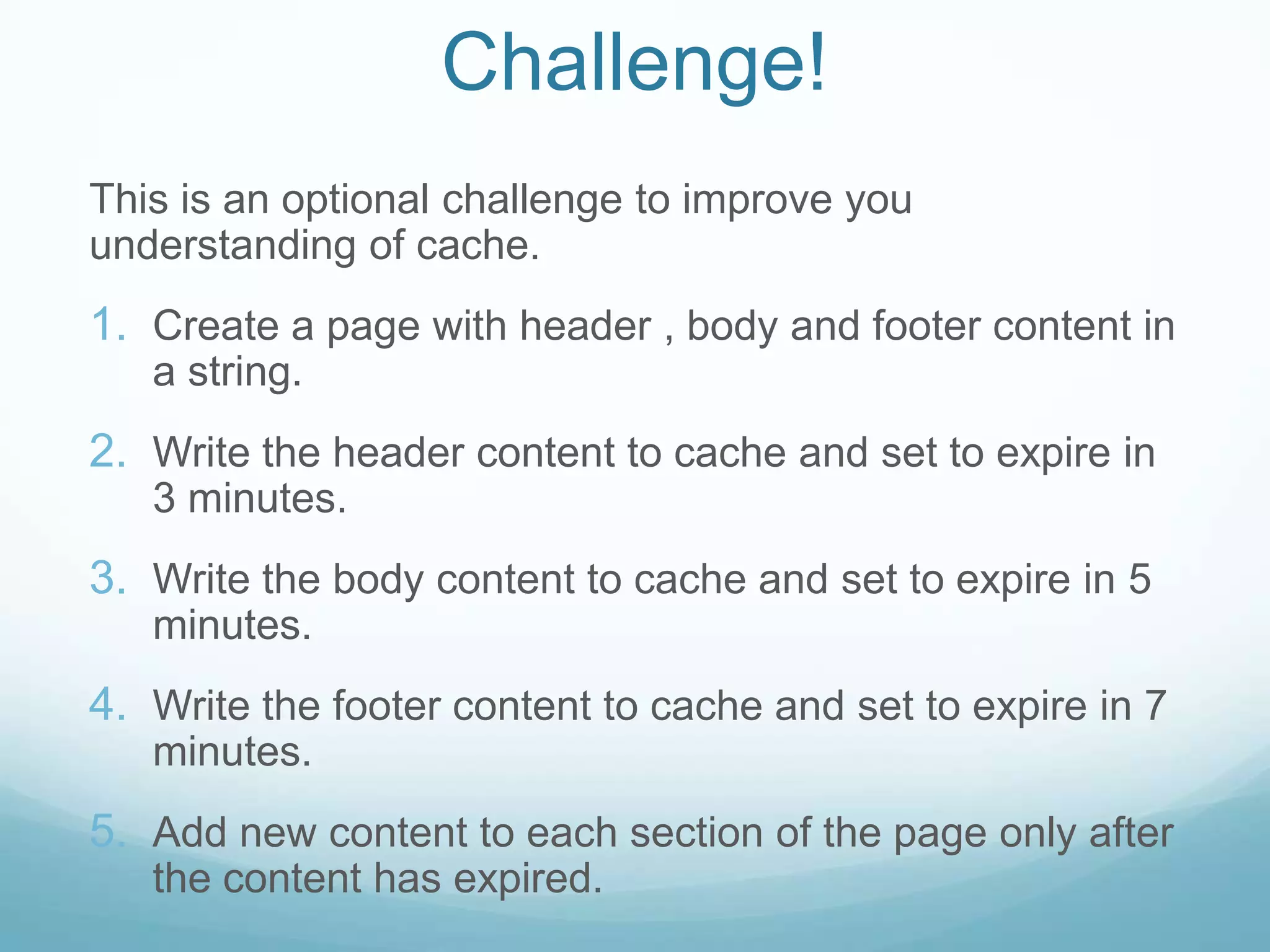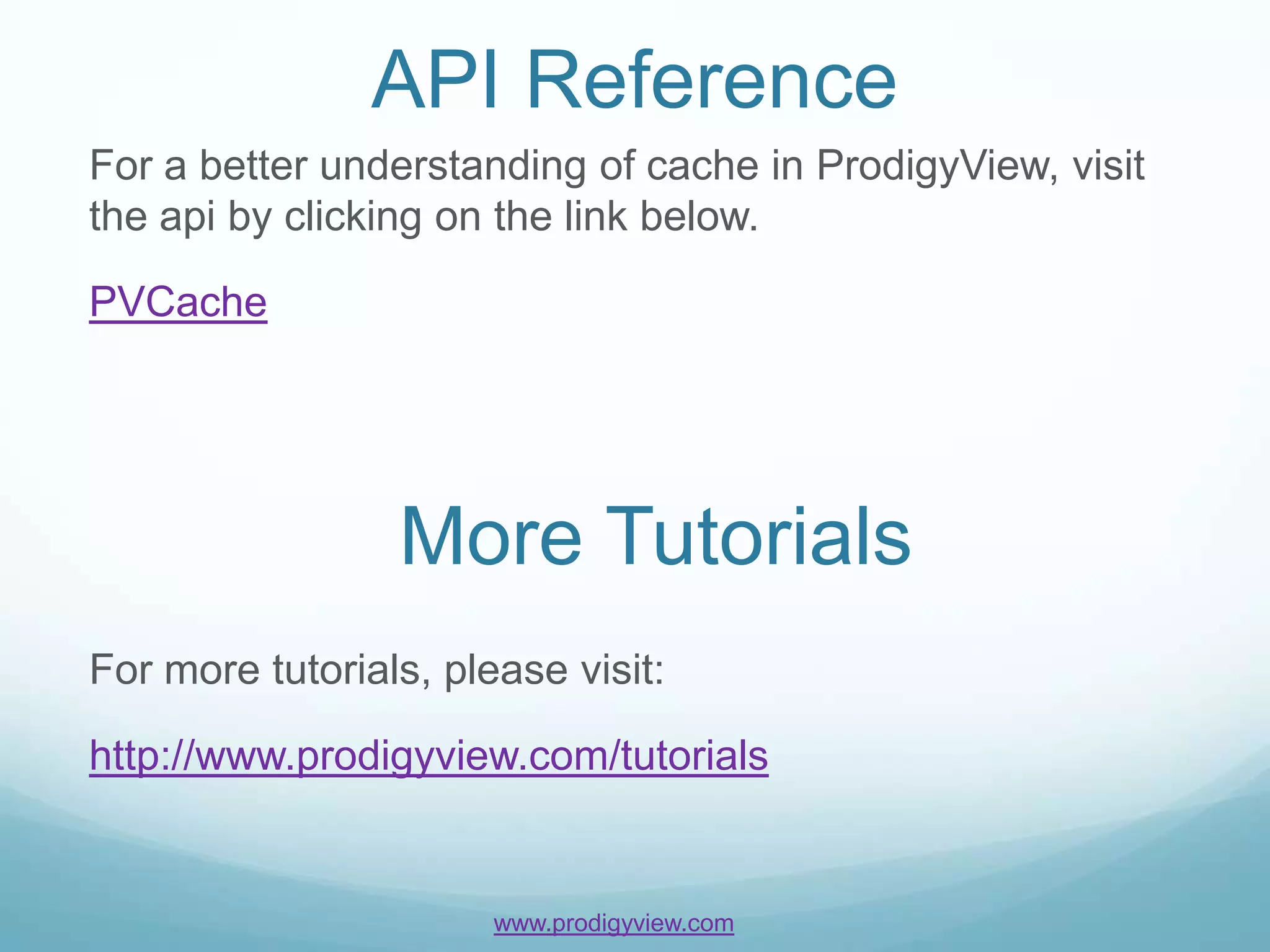This document provides an overview of basic file caching in ProdigyView to improve server performance. It demonstrates how to write, read, check expiration, and delete cache files. Key aspects include initializing the cache object, setting cache options like expiration time and name, and storing different data types like objects and arrays. The document recommends checking if cache has expired before reading or writing, and only updating the cache content after expiration. It links to an API reference and more tutorials for additional information.
